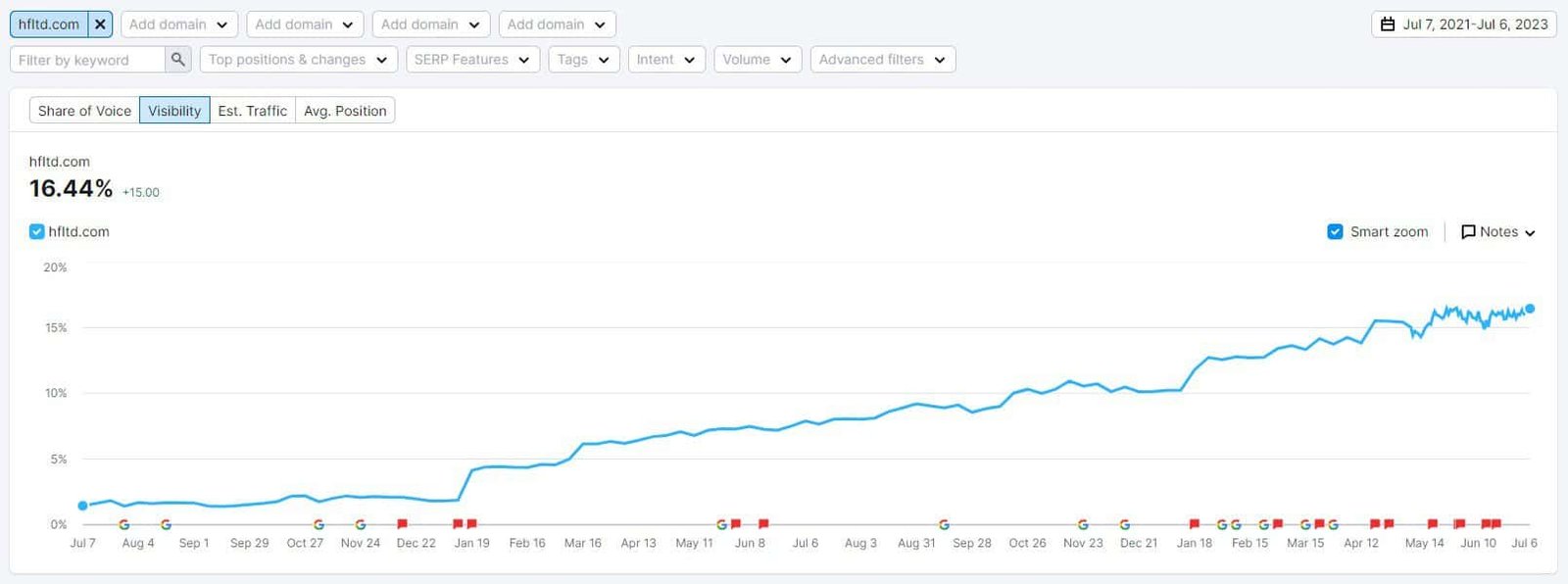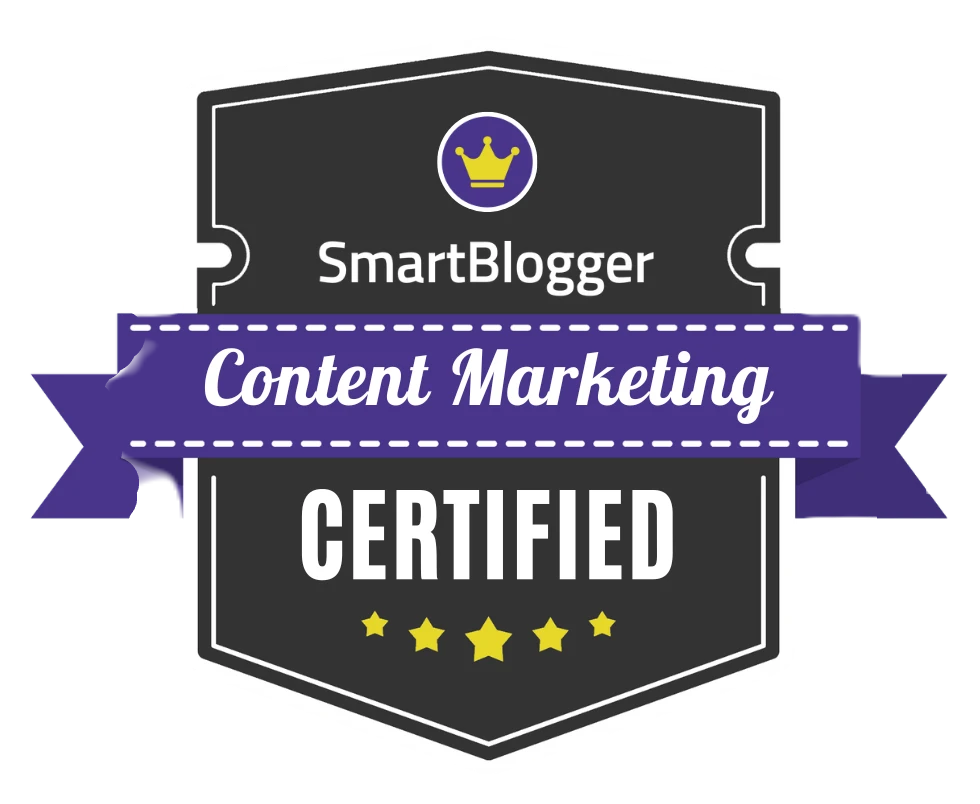Rank Higher on Google: How to Improve SEO on Shopify (2023)
Discover actionable tips on ‘how to improve SEO on Shopify’ and watch your organic traffic soar.
Struggling to get your Shopify store to the top of Google’s search results?
Feeling like you’re spinning your wheels, trying everything yet getting nowhere?
We get it.
SEO can feel like trying to solve a Rubik’s Cube in the dark – downright frustrating.
Guess what? It’s okay to feel overwhelmed.
It’s a tough game, no doubt.
But here’s the good news: you’re about to discover the secrets to mastering Shopify SEO in 2023.
So, ready to stop worrying and start ranking? Let’s dive in, shall we?
Table of Contents
Unpacking SEO's Influence on Your Shopify Success
Here’s a riddle for you: What’s always changing but stays the same?
The answer?
Google’s search engine results page (SERP). In the ever-evolving world of online shopping, it’s a constant battle for that coveted top spot.
But don’t fret – SEO is your secret weapon.
Why Your Online Visibility Owes It All to SEO
SEO, or Search Engine Optimisation, is like the shop window of your online store. It influences how easily potential customers can find your products on the SERP.
A top spot on Google’s page 1? That’s like having your shop on the busiest high street. Lower down or on page 2? You’re tucked away on a quiet back lane.
The Traffic Magnet: SEO’s Role in Drawing Organic Visitors
SEO is the engine under the bonnet of your Shopify store, powering you towards more organic traffic. When you master SEO, you’re effectively setting up signposts on the internet highway, directing customers straight to your online doorstep.
Show Me the Money: How SEO Fuels Your Sales and Revenue
Remember, SEO isn’t just about traffic. It’s about getting the right kind of traffic. Potential customers who search for products you sell.
By optimising your store, you’re not only improving visibility but also increasing the likelihood of turning browsers into buyers. And that means one thing – more revenue.
Key Takeaway: SEO isn’t just about visibility; it’s a potent tool to drive organic traffic and positively influence your sales and revenue. Invest in SEO as a long-term strategy for your Shopify store’s growth.
Having made it clear that SEO will be beneficial for your Shopify store, let us now focus on how to maximise its opportunities for success.

The Building Blocks: Setting Up Your Shopify Store for SEO Wins
Setting up your Shopify store for SEO success is like prepping for a marathon. A good start can set the pace for the rest of the race. Let’s dig into the details.
Picking a Domain Name: The Unsung Hero of SEO
Choosing a domain name isn’t just about brand recognition. It’s your first SEO handshake with Google. Keep it relevant, simple, and memorable – easy to type, easy to remember.
SEO Magic: How the Right Shopify Theme Plays Its Part
Think of your Shopify theme as the scaffolding of your online store. A theme that both looks good and is SEO-friendly not only has an attractive design. But also features well-crafted code and an easy-to-use interface – two qualities that Google values highly.
The Blueprint: How to Structure Your Store for SEO
Like a well-organised supermarket, an optimal store structure makes it easy for customers to find what they’re looking for. For SEO, this means creating logical categories and subcategories, making navigation a breeze for both customers and search engine crawlers.
Sprucing Up Your Shopify Theme: The Key to SEO Success
Like fitting a tailor-made suit, customising your theme allows you to perfect your SEO fit. From meta tags to alt text on images, customization allows you to boost your Shopify SEO with precision.
Mobile-friendly Design: No Longer a ‘Nice-to-Have’ in SEO
In today’s smartphone era, a mobile-friendly design isn’t just a nice-to-have; it’s an SEO must-have. Check your theme’s mobile compatibility with Google’s Mobile-Friendly Test and make adjustments where necessary.
Action Steps: Choose a Shopify-friendly domain name and theme. Structure your store optimally for SEO and make sure it’s mobile-friendly. Your store setup lays the foundation for your SEO success.
With your Shopify store now shipshape and ready for action, it’s time we set sail on the sea of keywords, charting a course for SEO triumph.

Keywords: The Golden Tickets to Shopify SEO Success
Like the language of love, the language of SEO is all about keywords. They’re the terms your potential customers are typing into Google. Understanding them? That’s your ticket to SEO success.
The Power of Keyword Research in Your SEO Strategy
Keywords are your SEO compass, guiding your content and metadata. They help you understand what your potential customers are looking for, allowing you to tailor your Shopify store to meet their needs.
Your Quick Guide to Performing Keyword Research
Performing keyword research is like mining for SEO gold. Tools like Google Keyword Planner and Semrush can help you dig deep into the keyword landscape, revealing the terms your potential customers are using.
Tools of the Trade: Keyword Research Tools to Elevate Your SEO
Remember, tools are only as good as the hands that wield them. Get familiar with keyword research tools and understand how to interpret their data. This approach will guide your SEO strategy, allowing you to make data-driven decisions.
How to Find and Leverage Keyword Opportunities
Keyword research isn’t just about volume. It’s also about understanding keyword difficulty and competitiveness. Learn to evaluate keyword opportunities, aiming for a mix of long-tail and short-tail keywords to balance reach and competitiveness.
Sneak Peek: Gleaning Insights from Competitor Keyword Analysis
Don’t forget to peek at your competition. Competitor keyword analysis allows you to understand the keywords your competitors are ranking for, providing insights for your own SEO strategy.
Key Takeaway: Your keywords are your roadmap in the SEO journey. Use research tools, evaluate opportunities, and analyse competitors to discover the most effective keywords for your store.
Now we’re armed with a treasure trove of potent keywords; let’s march forward into the exciting terrain of on-page SEO. Ready to conquer?

Getting Your Hands Dirty: On-Page SEO for Shopify
On-page SEO is like the spotlight on a theatre stage. It draws Google’s attention to your most important content. Let’s dive into the specifics.
The Double Impact: Optimising Page Titles and Meta Descriptions
Optimising page titles and meta descriptions is like writing the blurb on a book cover. It tells Google (and customers) what your page is about. Be concise, incorporate target keywords , and make it compelling.
Crafty URLs: A Secret Weapon in Your SEO Arsenal
SEO-friendly URLs are clean, concise, and descriptive. They not only help Google understand the page content but also enhance the user experience by giving customers an idea of what the page is about.
The Importance of Proper Heading Structure for SEO
Optimising headings and subheadings is like creating a clear roadmap for your content for Google. They break down your content, making it easy to scan and understand – both for customers and for Google’s crawlers.
Image Optimisation: The Underdog of SEO
Images are more than just a pretty face on your Shopify store. They’re a potential SEO goldmine. By optimising image file names and alt text, you’re giving Google more context about your page content.
Quality Over Quantity: The Secret Sauce to SEO-Optimised Content
Content is king in the SEO world. High-quality, SEO-optimised content answers your customers’ questions and meets their needs. It’s about providing value, incorporating keywords naturally, and offering the best information possible.
The Web of Success: Mastering Internal Linking Strategies
Internal linking is like setting up signposts within your Shopify store. They guide customers (and Google) to related and important content. Strategically linking your pages can boost their SEO value and enhance user experience.
The Art and Science of Creating Engaging Blog Content
A blog isn’t just a place to share news and ideas. It’s an SEO booster, allowing you to update your Shopify store regularly with fresh, keyword-rich content. Remember, make it engaging and valuable – content your customers will want to read and share.
Action Steps: Optimise your page titles, meta descriptions, URLs, headings, images, and content for SEO. Also, build internal links and create engaging blog posts. Every page is an SEO opportunity.
Brilliant! You know how to do good on-page SEO, but we have more to do. Let’s dive into the engine room and tinker with the technical aspects of SEO.

The Inner Workings: Technical SEO for Shopify Stores
On-page SEO is like the spotlight on a theatre stage. It draws Google’s attention to your most important content. Let’s dive into the specifics.
The Double Impact: Optimising Page Titles and Meta Descriptions
Optimising page titles and meta descriptions is like writing the blurb on a book cover. It tells Google (and customers) what your page is about. Be concise, incorporate target keywords , and make it compelling.
Crafty URLs: A Secret Weapon in Your SEO Arsenal
SEO-friendly URLs are clean, concise, and descriptive. They not only help Google understand the page content but also enhance the user experience by giving customers an idea of what the page is about.
The Importance of Proper Heading Structure for SEO
Optimising headings and subheadings is like creating a clear roadmap for your content for Google. They break down your content, making it easy to scan and understand – both for customers and for Google’s crawlers.
Image Optimisation: The Underdog of SEO
Images are more than just a pretty face on your Shopify store. They’re a potential SEO goldmine. By optimising image file names and alt text, you’re giving Google more context about your page content.
Quality Over Quantity: The Secret Sauce to SEO-Optimised Content
Content is king in the SEO world. High-quality, SEO-optimised content answers your customers’ questions and meets their needs. It’s about providing value, incorporating keywords naturally, and offering the best information possible.
The Web of Success: Mastering Internal Linking Strategies
Internal linking is like setting up signposts within your Shopify store. They guide customers (and Google) to related and important content. Strategically linking your pages can boost their SEO value and enhance user experience.
The Art and Science of Creating Engaging Blog Content
A blog isn’t just a place to share news and ideas. It’s an SEO booster, allowing you to update your Shopify store regularly with fresh, keyword-rich content. Remember, make it engaging and valuable – content your customers will want to read and share.
Action Steps: Optimise your page titles, meta descriptions, URLs, headings, images, and content for SEO. Also, build internal links and create engaging blog posts. Every page is an SEO opportunity.
Brilliant! You know how to do good on-page SEO, but we have more to do. Let’s dive into the engine room and tinker with the technical aspects of SEO.

Beyond the Site: Off-Page SEO for Shopify
Off-page SEO is like the buzz about your store in the wider world. It’s how Google gauges your store’s reputation and authority.
The Art of Building High-Quality Backlinks
High-quality backlinks are like personal recommendations in the online world. They tell Google your Shopify store offers valuable content. Building them requires networking, creating valuable content, and sometimes reaching out for guest blogging opportunities.
The Social Butterfly: How Social Media Complements SEO
Social media is more than just memes and cute cat videos. It’s an SEO booster. By promoting your content and engaging with your audience, you can drive traffic and improve your store’s online reputation.
The Power Duo: Influence Marketing and SEO
Influence marketing is like having a celebrity shop at your store. Their endorsement can boost your reputation and visibility. Collaborating with influencers can lead to high-quality backlinks and increased traffic.
Online Reviews: Your Silent SEO Partner
Online reviews are like personal testimonials. They tell Google your store is trustworthy and that it’s a good place to shop. Encourage reviews and respond to them – both good, and bad.
Collaborative Success: Guest Blogging and Content Partnerships
Guest blogging and content partnerships are like setting up pop-up stores at popular events. They give you exposure to a new audience and can lead to high-quality backlinks, boosting your Shopify store’s SEO.
Action Steps: Engage in high-quality backlink building; manage your social media presence; harness the power of influencer marketing, and manage online reviews. Your store’s reputation online matters!
Having spread our SEO efforts far and wide, let’s take a breather and assess the fruits of our labour. Ready to track your progress and tune your tactics?

The Proof Is in the Pudding: Tracking Your SEO Performance
Monitoring your SEO performance is like keeping an eye on your store’s footfall. It tells you what’s working, what isn’t, and where to tweak your strategy.
Tracking Success: Setting up Google Analytics for Shopify
Google Analytics is like your store’s CCTV. It records every customer action, providing you with invaluable data. Set it up for your Shopify store to understand customer behaviour check traffic and guide your SEO strategy.
Your SEO Assistant: Google Search Console
Google Search Console is like a direct line to Google. It shows you how Google sees your store, highlighting any issues and providing insights into your visibility on the SERP.
Keeping an Eye on Your Keyword Ranking
Keeping an eye on your keyword rankings is like watching the bestselling items in your store. It shows you where you’re succeeding and where you need to put more effort. Tools like SEMRush or Ahrefs can help with this.
Tracking Organic Traffic and Conversions: The SEO Pulse
Watching your organic traffic and conversions is like tracking footfall and sales in a brick-and-mortar store. It gives you an idea of your SEO success and helps you understand where to focus your efforts.
The Magic of Continual Learning: Updating Your SEO Strategy
SEO isn’t a set-it-and-forget-it process. It requires regular monitoring, testing, and tweaking. Always keep an eye on the data, adapt your strategy when necessary, and never stop learning. SEO success is a marathon, not a sprint.
Your Personal Watchtower: Custom SEO Reports and Dashboards
Custom SEO reports and dashboards are your personal SEO control panels. They give you a quick, easy-to-understand overview of your SEO performance, helping you make data-informed decisions and track your progress.
Key Takeaway: SEO is an ongoing process. Follow your progress using Google Analytics, Search Console, and rank tracking by keyword. Regular updates based on data insights can keep your SEO strategy sharp.
With your finger on the pulse of your SEO performance, you’re in the perfect place to spot and sidestep those sneaky pitfalls that could trip us up. Make sure your SEO efforts are smooth sailing.
Dodging the Bullets: Avoiding Common SEO Pitfalls
Avoiding common SEO pitfalls is like sidestepping the cracks in the pavement. It keeps your journey to SEO success smooth and unhindered.
The Slow Burn: Why Consistent SEO Efforts Are Vital
SEO isn’t a one-and-done deal. It’s like keeping your store tidy – it requires regular and consistent effort. Maintain your SEO tasks, keep your site updated, and remember, SEO results take time.
Avoiding SEO Overkill: The Risk of Over-Optimisation
Over-optimisation is like stuffing your store so full it’s hard to move. It can hinder your SEO efforts and even lead to penalties. Keep your keyword use natural, your backlink profile clean, and your site user-friendly.
Steer Clear: Common SEO Mistakes to Avoid
Avoiding common SEO mistakes is like navigating around pitfalls. Not every strategy that works for one store will work for another. Avoid shortcuts, keep up with SEO best practises and always focus on providing value to your customers.
Action Steps: Be consistent in your SEO efforts, avoid over-optimisation, and steer clear of common mistakes. With SEO, sometimes what you avoid is as important as what you do.
Armed with newfound knowledge to avoid common mistakes, let’s turn the spotlight on some real-life champions who’ve aced their SEO game.

Seeing is Believing: SEO Success Stories from Real Shopify Stores

Let’s take a look at a real-life example of successful Shopify SEO efforts. These stories are like a guided tour of successful stores, giving you a clearer picture of SEO in action.
Spotlight Success: Hayes & Finch
Hayes & Finch, renowned church suppliers in the UK, are a shining testament to the power of strategic SEO efforts. In 2019, their online presence was merely a tiny segment of their overall business operations, contributing to only about 5% of their total business. However, they understood the potential of digital transformation and initiated a strategic SEO overhaul.
They began by addressing basic SEO issues such as product tagging, a crucial step often overlooked. They enhanced their visibility through meticulously optimised meta descriptions, ensuring that potential customers would find them on Google’s search engine results page (SERP).
However, Hayes & Finch didn’t stop there. Recognising the value of information-rich content, they bolstered their website with it, simultaneously improving their SEO and providing value to visitors. Additionally, they engaged in a campaign of highly targeted guest posts, acquiring valuable backlinks from reputable sources.
The result? A whopping increase in their business coming from their website, which leapt from 5% to 16%. Their daily Google impressions echoed this success, with a phenomenal rise from 2,800 in March 2022 to 9,100 in June 2023.
Hayes & Finch’s case is a testament to the fact that SEO is not a quick fix but a strategic investment. Their progress underlines the impact of consistent SEO efforts and serves as a blueprint for Shopify store owners who want to follow suit.
Key Takeaway: The journey of Hayes & Finch illustrates the success of a holistic SEO strategy. Don’t focus solely on keywords; remember the importance of informational content, backlinks, and basic SEO hygiene like tagging and meta descriptions. Stay consistent, and the results will follow.
Feeling inspired by this success story? Brilliant! Now, let’s bring it all home and recap our SEO odyssey, and look at how you can replicate such success on your own Shopify store.
The Final Scoop: Your SEO Success is Just Around the Corner
If you’re sat there thinking, “Blimey, SEO is a beast of a task. Is it worth it?” – let’s be straight here, you’re right.
But that’s okay! It’s like feeling winded after a sprint; you’ve just taken in a load of info.
Remember all those golden nuggets we’ve trawled through together. From setting up your Shopify store for SEO success to diving deep into on-page, technical, and off-page SEO? It’s a hefty toolbox you’ve built up, full of strategies, tactics, and shiny new insights.
Just picture your online store climbing, the SERPs, rising higher and higher. It’s a sight to behold, isn’t it? Each click from a potential customer is a seal of approval, a testament to your effort.
Organic traffic pouring in, the till ringing with sales, and all because your website is visible, engaging, and meets your customers’ needs. It’s like the feeling when your favourite footy team scores the winning goal. That could be your shop – your team.
We’ve journeyed through the ins and outs of SEO, but your adventure is just beginning. As you implement these strategies, your Shopify store will evolve. It’ll grow stronger, more visible, and before you know it, you’ll be standing atop the Google SERPs, like a climber conquering Everest.
Now’s the time to step into the SEO arena. Get your hands dirty, and put your newfound knowledge to work. It might seem daunting, but remember, every top-ranking online store started where you are now.
You’re not just a manager or owner; you’re a visionary with a plan to get your online business to the top of Google. The path to success isn’t always easy. But fortunately, the view from the top is worth it.
Final Takeaway: SEO is a continuous journey of learning and optimising. Stay committed, be patient, and the results will follow. Your Shopify store has the potential to reach the stars with the right SEO strategies. Keep going!

FAQs on How to Improve SEO on Shopify
Q: How do I improve SEO on my Shopify website?
A: Start by choosing an SEO-friendly domain and theme. Optimise your site structure and make it mobile-friendly. Implement keyword research in your content strategy and optimize your on-page elements like page titles, meta descriptions, and images.
Don’t forget about technical SEO aspects like site speed, HTTPS, structured data, and handling of 404 errors. Finally, keep track of your SEO performance using tools like Google Analytics and Google Search Console. And remember, consistency is key!
Q: What are the best Shopify SEO strategies?
A: Successful Shopify SEO strategies involve on-page, off-page, and technical SEO. Use relevant keywords in your content, URLs, and alt tags. Develop high-quality, engaging blog posts and internally link where appropriate.
For off-page SEO, build quality backlinks and use social media to your advantage. Technical SEO involves aspects like improving site speed, enabling HTTPS, and implementing structured data. The best SEO for Shopify will depend on what you want to achieve and how quickly you want to achieve it.
Q: Is Shopify good for SEO?
A: Yes, Shopify is excellent for SEO. It comes with built-in SEO-friendly features like customisable H tags, meta tags, URLs, and alt text. Shopify also allows you to integrate various SEO apps and plugins, making it easier to optimise your store.
However, while Shopify provides the tools, it’s up to you to use them effectively.
Q: How do I rank higher on Google Shopify?
A: To rank higher, optimise your Shopify store with SEO best practices. Include keywords in your product descriptions, URLs, and alt text. Use high-quality images and provide valuable, engaging content.
Remember to handle 404 errors correctly and use canonical URLs where necessary. Also, keep an eye on your site speed and mobile-friendliness.
Q: How Do You Do SEO For a Shopify Store?
A: SEO for a Shopify store involves keyword research, on-page and off-page optimisation, technical SEO, and performance monitoring. This means you’ll need to focus on elements like meta descriptions, product descriptions, image alt texts, site structure, mobile optimisation, internal linking, backlinking, site speed, and more.
Q: How to do SEO on Shopify?
A: To do SEO on Shopify, you’ll need to focus on elements like keyword research, on-page SEO (titles, meta descriptions, image alt texts), site structure, and technical SEO (site speed, mobile optimisation).
You’ll also need to build high-quality backlinks and keep track of your performance using Google Analytics and Google Search Console.
Q: How to improve SEO on Shopify?
A: Improving SEO on Shopify involves various steps. Start with keyword research to know what your potential customers are searching for. Use these keywords in your product descriptions, blog posts, page titles, and meta descriptions.
Optimize your website structure and make it mobile-friendly. Also, focus on technical aspects like site speed and security. Remember, SEO is a continuous process, and it takes time to see results.
Q: What Is Shopify SEO?
A: Shopify SEO involves optimising your Shopify online store to make it more visible to search engines. This involves using SEO best practices like keyword research, on-page and off-page SEO, technical SEO, and continuous monitoring of your SEO performance.
The aim is to rank higher in search engine results, attract organic traffic, and ultimately increase sales.
Q: Does Shopify have an SEO plugin?
A: Absolutely! Shopify has a robust ecosystem of SEO plugins, also known as apps, designed to help you optimise your online store.
These SEO apps can help with tasks such as keyword research, meta tag editing, image optimisation, and much more. It’s all about choosing the app that fits your specific needs and then using it to enhance your Shopify SEO efforts.
Q: What is the best SEO plugin for Shopify?
A: While ‘best’ can be subjective, and depends largely on your specific SEO needs, some SEO plugins are popular among Shopify store owners. For instance, the ‘Plug in SEO‘ app is a comprehensive tool offering features for checking page titles, headings, meta descriptions, speed, and more.
‘SEO Image Optimizer‘ is another valuable tool, especially useful for automatically adding alt tags to your images. Try out a few and see which one works best for your store.
Q: How do I add SEO to Shopify?
A: Adding SEO to your Shopify store involves multiple steps. Start with your site structure and optimise it for search engines. Then, conduct keyword research and use these keywords strategically in your product descriptions, page titles, URLs, and meta descriptions.
Make sure your site is mobile-friendly and your site speed is up to scratch. For more advanced SEO, consider adding structured data, creating a backlink strategy, and managing 404 errors effectively. Shopify also allows you to add SEO plugins, or apps, to enhance your SEO efforts.
And remember, SEO isn’t a one-time deal – it requires ongoing effort and monitoring.



